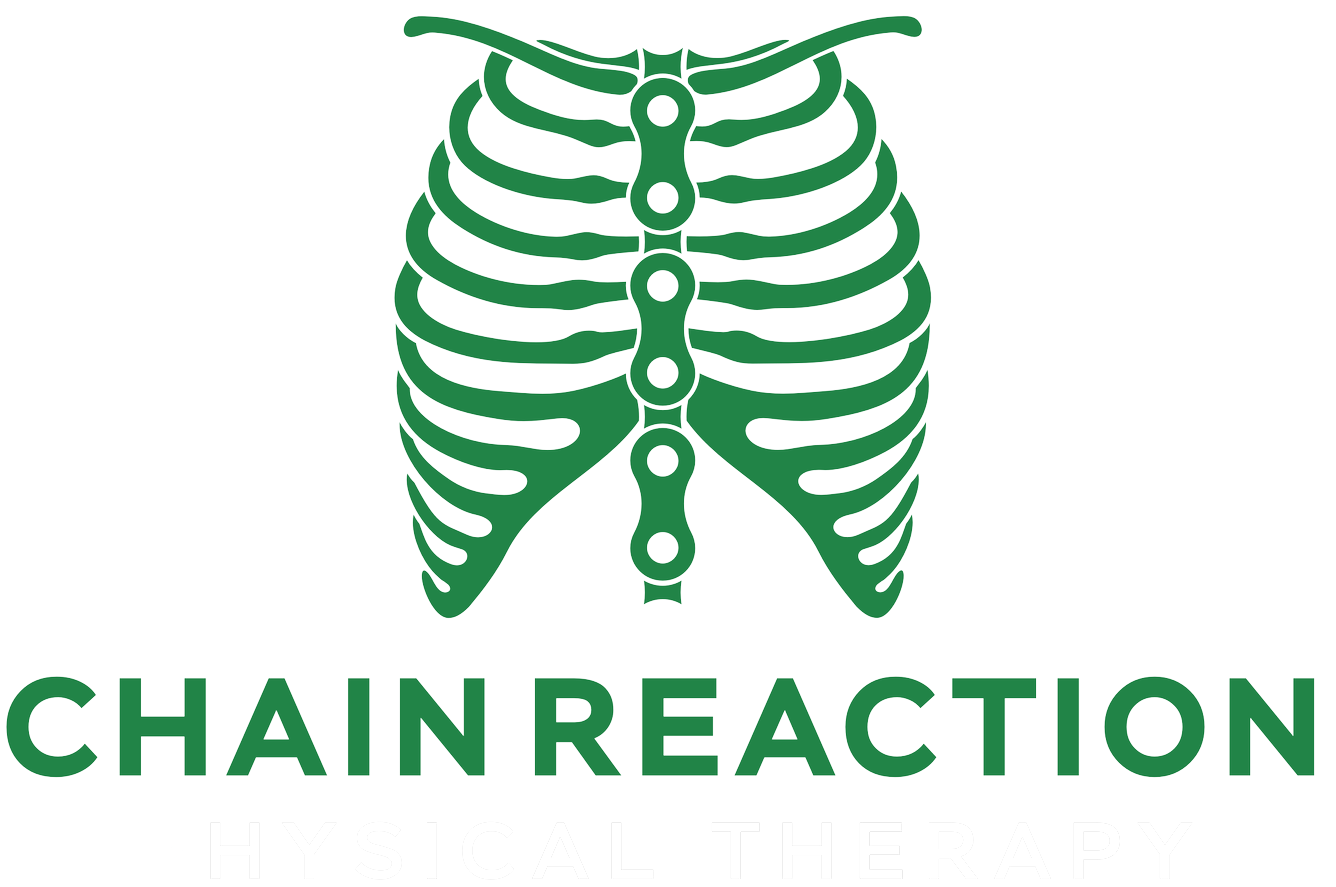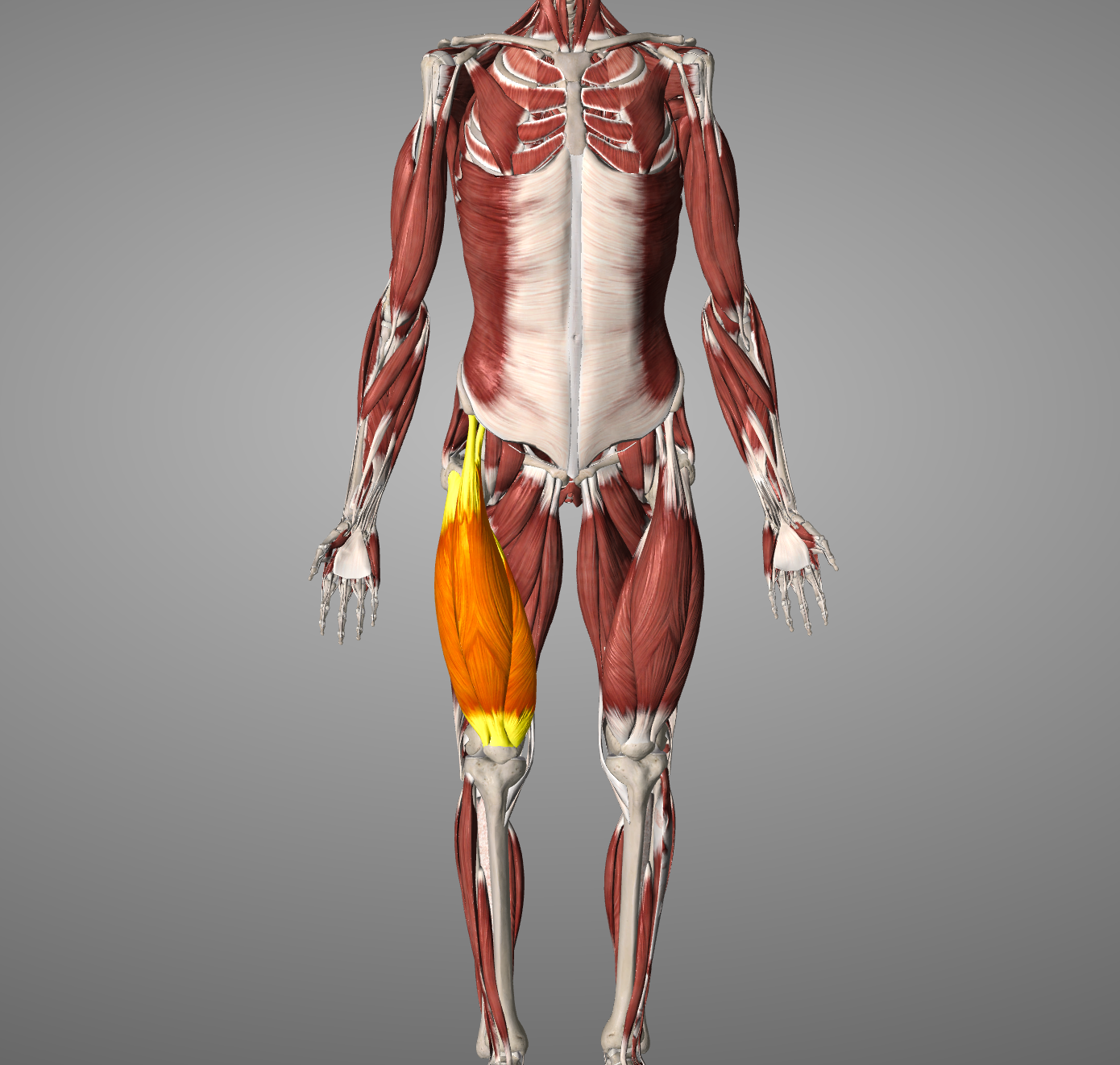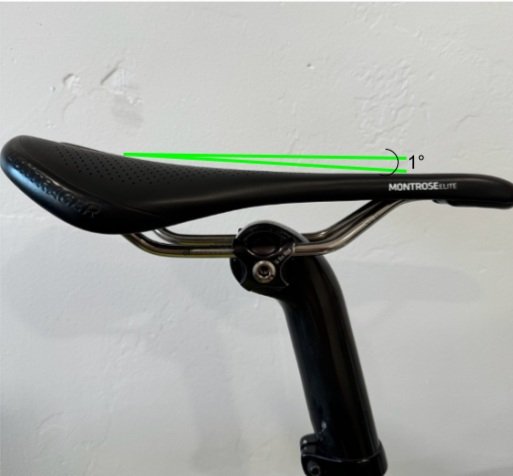Quad Pain with Cycling & Seat Height - How They’re Related
Ever feel like your quads are the only thing that got worked by the end of your ride? Do they or your hip flexors always feel tight? Are they painful by the time you get off the bike and keep hurting hours after your ride?
Your saddle height may be causing your quad pain and tightness, on and off the bike.
Quick overview of the quad muscles:
The quads are a group of muscles at the front of the thigh. They flex the hip and extend the knee. They are one of the main power drivers when we pedal down into our pedal stroke.
Quad muscles highlighted in orange
Because the quads are a large muscle group, they’re a group our body is really good at recruiting to generate a lot of force. But that also means it’s really easy for them to try and do too much of the work.
Saddle position can either disadvantage the quads to make them work harder, causing pain, or support the quads so that they can generate force and make you go faster, without feeling painful or tight.
There are three main aspects regarding saddle position that can affect the quads:
1. Saddle height
2. Saddle fore/aft
3. Saddle tilt
Let’s talk about saddle height first.
If your saddle is too low:
If your saddle is too low, it will:
1. Cause the bottom of the quad to lengthen significantly at the top of your pedal stroke.
2. Prevent the quad from lengthening to its ideal length at the bottom of your pedal stroke.
Both of these can cause quad pain with cycling as it doesn’t allow your quad to ever be in an ideal position but rather to have to work in its two extremes
If your saddle is too high:
1. Your quad will have to lengthen past its ideal length at the bottom of the pedal stroke as you pedal.
How to find the right height:
Quick and dirty angle measurement for saddle height is your knee angle. It should be somewhere around 145-155 degrees.
Now let’s discuss saddle fore/aft
If your saddle is too far forward
If your saddle is too far forward, it will:
1. Push your knee too far ahead of your foot as you pedal, causing quad and knee pain.
2. Place your body weight further forward. If you ride mountain bikes, this will result in decreased handling capabilities.
If your saddle is too far backwards
If your saddle is too far backwards, it will:
1. Stretch the proximal hamstring, making the quad have to work harder.
2. Increase the lever arm of your femur, creating more work for the quad to complete a pedal revolution and causing quad pain.
How to find the right fore/aft:
If you drop a line from your knee to your pedal, your knee should be relatively over the pedal spindle.
Lastly, let’s discuss saddle tilt
If your saddle is nose down
If your saddle is too far nose down, it will:
1. Result in your pelvis constantly sliding down the saddle, requiring you to use your quads to constantly push yourself back up
If your saddle is nose up
If your saddle is too far nose up, it will:
1. Cause your pelvis to posteriorly tuck, shortening the proximal fibers of your quad and causing quad pain.
How to find the right saddle angle:
I generally recommend saddle angles somewhere between -1 degree to 1 degree. Tilt the saddle incrementally to find out what feels best for you
As you can see, there are several saddle parameters that must all be taken into account when it comes to addressing your quad pain while cycling. Make sure you evaluate these three to help you feel better on the bike.
My next steps for you:
1. Download my FREE Ultimate Bike Fit Guide to find out the 5 most important variables you must address to feel good on your bike by clicking on the link or entering your email below👇
2. Learn more about how your saddle height is affecting you with these posts:






